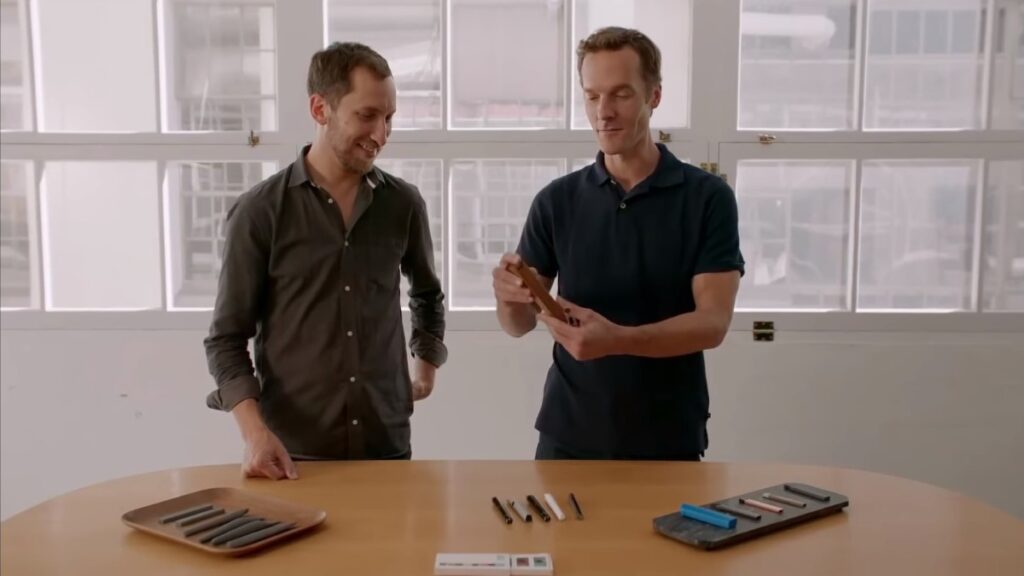Big Vape The Rise and Fall of Juul is a four-part Netflix documentary series directed by R.J. Cutler. It is based on the new book “Big Vape: The Incendiary Rise of Juul” by TIME correspondent Jamie Ducharme. Produced by Amblin Television, This Machine (a part of Sony Pictures Television), and TIME Studios.
The documentary features government officials, ex-employees, investors and users including Dr Robert Jackler, David Pierce, Dr Robert Proctor, Ralph Eschenbach, Jamie Ducharme, Ian Fernandez, Gabriel Post, Steven Parrish, Dr Stanton Glanz, Kurt Sonderegger, Dr Cheryl Healton, Ash Casselman, Allan Gladstone, Chris Charles, Michelle Salta, Andre Rougeau, Mimi Sweeney, Ksenia Beneo, Nora Walker and several others.
Big Vape The Rise and Fall of Juul Review
Right at the start of the documentary, the creators give us a good picture of what Juul company had gone through. Stating that at its height, it employed 4,000 people and was valued at nearly 40 billion dollars. Today the company is worth less than 5% of that value. From being on the top of the mountain they endured a landslide fall to the bottom. What really started as a well-meaning product from two Stanford students – Adam Bowen and James Monsees, who wanted to create a safe way to smoke and might as well get rid of the combustible cigarettes.
But ended up being branded as a harmful product that could cost your life. Their beginning is as humble and exciting as any video about some geniuses who created something revolutionary. The idea to create the Juul came from their own on & off relationship with smoking. While they liked how it often became a socialising ritual at the back of their college grounds, they hated the fact that it was slowly killing you and causing diseases like cancer. So they wanted to find a solution to get the same effect of smoking but without the fear of getting cancer.
Thus came their first product – Ploom, which used the technology of vaporising tobacco instead of burning it. Their pitch of how they wanted the chain smokers to quit using cigarettes and get off their addiction by switching to Juul was the selling point to their investors. If we consider their intention behind starting it all, then they were onto something really helpful. But when money, ambition, greed and too many hands are added to the equation, it becomes a disaster quickly.
Also Read: Di4ries Season 2 Part 1 Review: Sometimes Holding On Too Hard Can Break the Tie

One of the common mistakes seen in all the documentaries about disastrous start-up companies is that they often aim too big before even having the capacity to reach there. Adam and James definitely needed a lot of time to research and perfect their product before mass selling.
But when the pressure of investors and the ambition to succeed quickly takes over, you often end up doing the best at the moment and leave disastrous consequences for the future. Contrary to that, the co-founders did exceptionally well in making their product better over time but once again, you can’t ace in everything. And that’s where people with ideas get crushed on the business front. They knew their product the best but didn’t have expertise in how to market & sell it to the larger public.
In the documentary, the creators have shown how so many people blame their marketing strategies and target audience for what ensued for the company. Their vibrant advertisement with dancing models and indulging seemingly young influencers did invite customers from all over the place, but they weren’t the target group that they intended. Instead of chain smokers wanting to quit cigarettes, teenagers started eyeing the sleek device called the ‘iPhone’ of the smoking world.

There was an ample amount of time for the company to avoid the landslide but if you are raking in the money you never expected, then nobody’s gonna bat an eye about who the end customer is. The parents solely blame the company for their kids getting addicted to vaping and getting sick. But the sellers are also responsible for freely selling it, as well as the parents for not keeping a closer check. People associated with Juul still defend the (reduce smoking) ideology that attracted them to become a part of it but since becoming a part of Altria, many feel like they have shaken hands with the devil they were trying to shoo away.
It essentially serves as a cautionary tale for other existing and developing companies to spend more time on research & development and make smart decisions that reflect the brand’s message. Instead of succumbing to the age-old business tactics of bagging the money as quickly as possible, and then watching the egg-laying chicken slowly being set on fire because it made an avoidable mistake.
Rating: 3/5
Big Vape The Rise and Fall of Juul is available for streaming on Netflix.
Also Read: Once Upon a Star Review: The Magic of Cinema, Dreams and Friendship

Leave a Reply